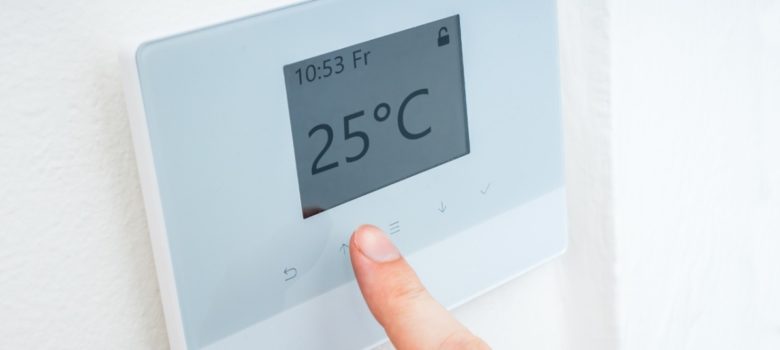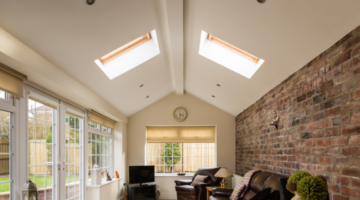
Most good infrared heating panels can be plugged in and used straight away. This means you just switch them on and off as and when you need them, which is fine if they’re in a space you don’t use very often, for instance. However, as a permanent heating solution, we recommend that they are hardwired into the mains. This avoids trailing wires, and means you can control them with a smart thermostat and receivers – with the added option of remote control from your smartphone. It means (once you have programmed the system) you can control your heating without having to think much about it, and without having to be at home.
Thermostat
With a smart heating system, you will need a thermostat in each room that contains infrared panels.
Like any thermostat, a smart thermostat controls the temperature in the room, depending on your individual needs. You can preset it or change settings as you go along, making sure your home is always as comfortable as possible. The thermostat will cut the heaters off when the room reaches the required temperature, and switch them back on automatically when the room gets colder again. Simply program the times and temperatures you want, and it will do the rest.
A smart thermostat is able to store numerous different settings, allowing you different patterns of heating for weekdays and weekends, for example. Maybe you normally want the heating to go off when you leave for work and turn back on half an hour before your return – or maybe you work from home one day a week, and you’d rather keep the house at a slightly higher temperature that day. With old thermostats, you can normally only set one temperature, which the heating aims to reach for a set amount of time in the morning and a set time in the evening.
Receiver
You will normally need one of these wired in with each per infrared panel, and it will send and receive signals to/from the thermostat, switching panels on or off when the room has met the preset temperature.
Control panel
An extra option is a control panel that allows you to control your heaters from outside the home. It replaces the need for separate thermostats in every room, as each panel can be controlled from the control screen. Like a thermostat, it communicates with the receivers to turn infrared panels on or off to meet the preset temperature. The big difference is that it allows you to turn your heating on and off, and set temperatures and schedules from anywhere (through a smartphone app). This can be really useful in certain scenarios. If you go out and forget to turn the heating off, for instance, you can do it from wherever you are.
So there you have it – the easy way to make sure your home is exactly the temperature you like it! Smart heating controls are fast becoming the norm in the UK, and if you are replacing your heating system, it makes sense to get yourself a smart thermostat too.
Think we missed something? Do you have a different opinion?
Comment below to get your voice heard…












I am hoping to install Infrared heating panels in several rooms with a view to each one having its own programmable thermostat, Ideally, as well as being able to set a minimum and maximum temperature, it would need to automatically turn the radiator off after a predetermined time of say 1, 2,3 or 4 hours to avoid the heater being left on inadvertently for a prolonged period. Is there a product such as this currently available?
Hi, im interested in getting a mirrored infrared panel for my cloakroom. The room is very small approx 1m x 1m, will the panel work in this size room?
Hi is an inferred heating panal an inductive load Thank you Bob
Where should a thermostat be placed relative to the room the panel is in ?